What to do About Pests that Love Moisture
Many scenarios play a hand in increasing the moisture levels within your home — storms, flooding, pipe leaks, and so on! While this not only leads to issues such as mold and mildew growth, it can also cause pest infestations. In the insect world, there are many types of pests that love — nay, thrive off of moisture and humid environments. Which is why Charlotte and the surrounding areas are home to a lot of these pests.
The Common Sources of Moisture Around Your Home
Moisture-loving pests are attracted to your home for a number of reasons. They may use the moisture as a resource for water and breeding, or they may require a high level of humidity to live comfortably. Either way, it’s important to reduce the amount of moisture and humidity levels in and around your home to avoid unwanted pests. Below are the most common sources of moisture around your home that attract moisture-loving pests.
Attic Intrusion
Roof leaks, HVAC system leaks, and wildlife damage can bring wet conditions inside of your attic. Insulation is meant to protect the livable parts of your home from the elements, but when wet, attic insulation can’t do its job properly. If you begin to notice condensation in the lower parts of your home – moisture in your attic is likely the culprit. While the insulation prevents moisture build-up, once it’s wet, it’s no longer effective. This can be just the beginning of a complicated cycle. Proper attic insulation is crucial to help manage moisture levels inside of your home, as well as deter pests that love moisture from finding ideal living conditions inside of your home. Keep your attic’s insulation in tip-top shape by understanding the importance of insulation in the first place and by performing regular inspections of the space.
Insufficient Crawl Space Moisture Prevention
Crawl spaces are highly susceptible to moisture problems since they’re often located underground. Flooding, rain, or pipe and HVAC leaks are common causes of moisture intrusion in crawl spaces. In addition, the clay-heavy soil you find in the Carolinas retains high levels of moisture, making the problem even worse. Encapsulating your crawl space will help with keeping moisture levels low to deter pests that love moisture. Like the name suggests, crawl space encapsulation literally seals, or encapsulates, your crawl space. This process significantly reduces the chances of flooding, fungal growth, and wood rot — which attracts termites.
Flooding, Storms, and Wet Weather
Water damage often leads to heightened pest problems after storms. Not only does wet weather affect the spaces inside of your home, as you now know with the attic and crawl space, but it encourages pests to seek shelter in your home. While you can’t stop the weather, you can protect your home from pest invasions before a storm comes rolling in. Take the time to look through every room and area of your home for any openings that wandering pests could crawl into while trying to escape bad weather. Be sure to fix and seal any openings or crevices caused by damage so that pests and wildlife aren’t able to find their way inside.
Pipe Leaks
We’ve mentioned pipe leaks many times, but it’s an extremely common issue that most homeowners don’t think much about until there’s a much larger problem at hand. Pests that love moisture can find water from what seems like a million miles away. Don’t give pests any reason to want to come into your home. Address these leaks immediately!
Water Features
Water features such as birdbaths, ponds, or natural swimming pools are beautiful to look at and create a relaxing outdoor experience. But these environments are the ultimate breeding ground for many types of pests! Mosquitoes are a great example of a nuisance pest that loves water. We’re not saying you have to get rid of your swimming pool, but we recommend adding a water fountain or some sort of component that will move the water. Stagnant water is attractive to pests, but a strong current is less likely to attract them. Related: Is There Fungal Growth in Your Crawl Space?
Pests that Love Moisture
Below are some of the common, moisture-loving pests our customers deal with on a regular basis. If you find any, give us a call as they can be difficult to exterminate yourself! Check out our list of each pest, why they need water to survive, and where you will find them in your home or on your property. 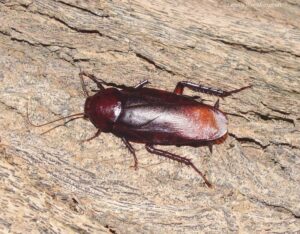
1. Cockroaches
Cockroaches love damp environments, and any source of water can lure them in. They especially like to get inside of pipes, as they can hold their breath for up to 40 minutes and live up to a month without food! All cockroaches really need is a moist environment to take over your home. By keeping all areas of your home as dry as possible you can potentially avoid 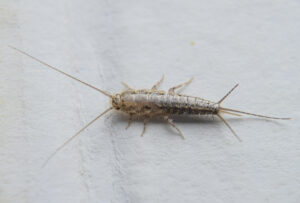
2. Silverfish
These pests look like a cross between an earwig and a cockroach and are literally silver in color. Silverfish require extremely high amounts of moisture and humidity to survive. Therefore, if you find them indoors, we guarantee that there are moisture problems somewhere nearby. Look for water damage in your home to find the source of what is attracting these pests that love moisture. 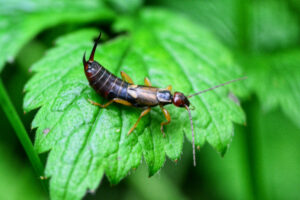
3. Earwigs
Similar to silverfish, earwigs can’t live in dry conditions. Even their diet consists of damp mulch and leaves. Inside of your home, these pests are often found near drains, sinks cabinets, bathroom baseboards, your home’s foundation and crawl space. Outdoors, earwigs generally live under stones, decaying trees, mulch, in gardens, and leaf piles. Do your best to keep debris and vegetation away from your home’s exterior to discourage them from making their way into your house.
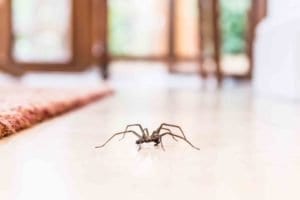
4. Spiders
Not all spiders are classified as pests that love moisture. Fortunately for us, the venomous Brown Recluse and Black Widow prefer dry environments. On the other hand, cellar spiders and fishing spiders need humid environments to survive. Look for signs of these spiders in your attic, bathroom and kitchen cabinets, basement, and crawl space. The presence of webs are the biggest indicator that spiders are inside.
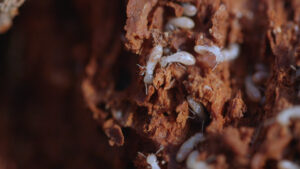
5. Termites
As mentioned, termites love rotting wood because it is their primary food source. They also eat a variety of paper products, like drywall, as well. Termites are often attracted to peeling wallpaper in bathrooms — another source of moisture for them. Keeping your home dry can reduce your chances of avoiding an infestation from these destructive pests. If you do spot termites, call a pest professional immediately. Termites can cause a lot of damage and can go unnoticed for many years. 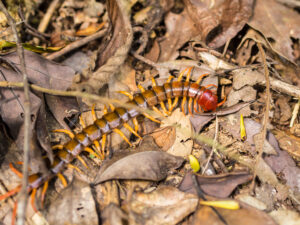
6. Centipedes
Although most centipedes are technically venomous, their presence alone can send a shiver down your spine. With their 15 sets of legs, centipedes are bizarre-looking pests that are common in the Carolinas. They love damp and dark places to nest. You will often find them in your bathroom and kitchen drains. Because they’re nocturnal, you’ll have to watch for them at night. 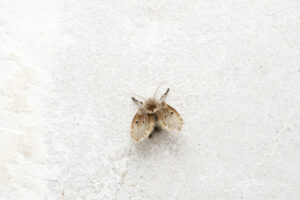
7. Drain Flies
The drain fly is a specific type of fly that lives in wet environments. Their appearance looks more like that of a moth than a housefly. Drain flies gather, breed, and lay eggs in stagnant water. Toilet tanks, drains, septic tanks, and soil that has been contaminated with sewage is the drain flies’ preferred place to live. 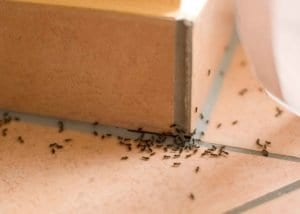
8. Ants
Interestingly, ants have a unique system for storing water that supplies their entire colony. Certain ants locate water sources and take in large amounts of water through a second stomach. They then carry the load of water back to the colony where it is then offered to ants that are further up in the hierarchy. When searching for a water supply, don’t be surprised if they decide your house is their new watering hole!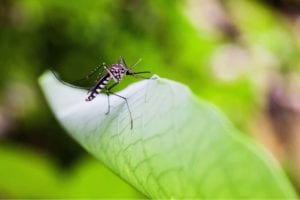
9. Mosquitoes
We couldn’t write about pests that love moisture and not mention the mosquito. These pests are the biggest nuisance around, and they love to torment us with their incessant biting. Mosquitoes can breed in water as shallow as one inch, so make sure you have no standing water anywhere in your home or around your property. Strategically spraying for mosquitoes is the only way to get rid of mosquitoes. DIY methods don’t do much in deterring them from your home and yard. Pest professionals are aware of when, where, how much to spray for mosquitoes. 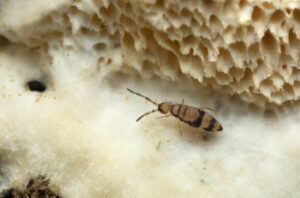
10. Springtails
While not technically considered an insect, you could have fooled us! Springtails are actually hexapods, and are similar to crustaceans. They are found in areas of high moisture like bathrooms, basements, kitchens, and even in the soil of over-watered houseplants. These pests are very small, between 1/16th and 1/8th inch long. While they don’t fly, they can jump up to several inches using a forked structure under the abdomen that resembles a tail. Fortunately, springtails are not dangerous but they are definitely considered a nuisance pest.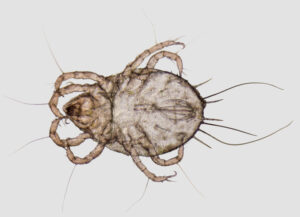
11. Dust Mites
These microscopic pests thrive in humidity levels above 50% and temperatures above 70 degrees Fahrenheit, which, in the Charlotte region encompasses a lot of places. In fact, roughly 4 out of 5 homes in the US have detectable levels of dust mite allergens in at least one bed. Their favorite source of food are dead skin cells shed by people and pets. While they don’t bite or sting, dust mite allergies are extremely common among people with asthma. Learn more about the most common pests you will find throughout the Carolinas, including signs of each and what attracts them into your home.
How to Get Rid of Pests that Love Moisture
Now that you have met the 11 most common moisture-loving pests, it’s time to get them out of your home and garden! Be aware, at-home pest control efforts tend to make matters worse. Take it from those who know and have been there, it’s better to let the professionals hand pests the correct way. Sometimes, DIY pest control methods can actually make the situation worse. You may think you’re getting rid of the pest, but all you’re really doing is pushing them to another area. There’s no way to really know your efforts are working unless you have the expertise that we do. If you’re dealing with any of these pests, give us a call. Our pest experts are more than happy to take a look at what type of pest you’re dealing with and help you come up with a solution that works best for you. To schedule a pest inspection, click the button below!